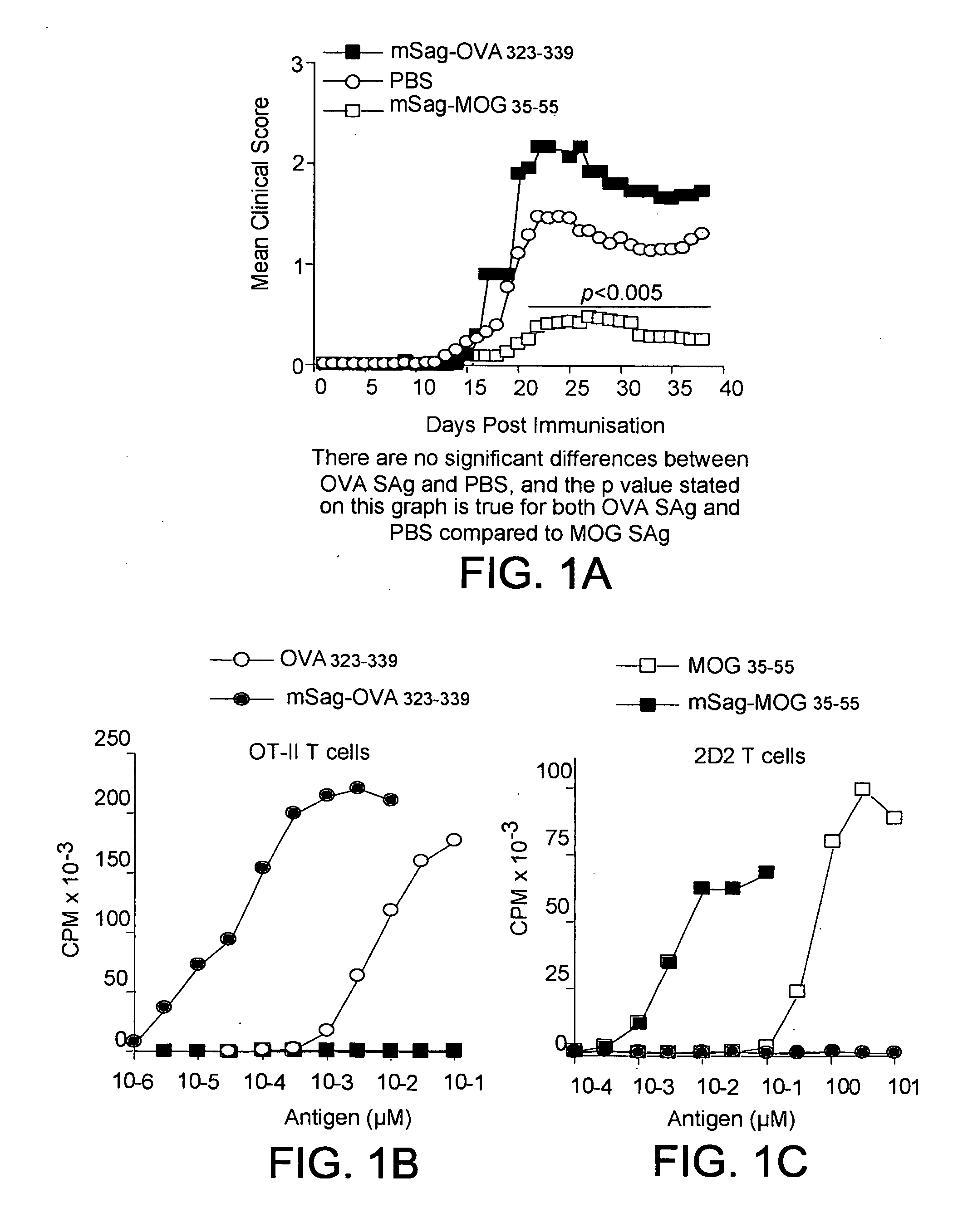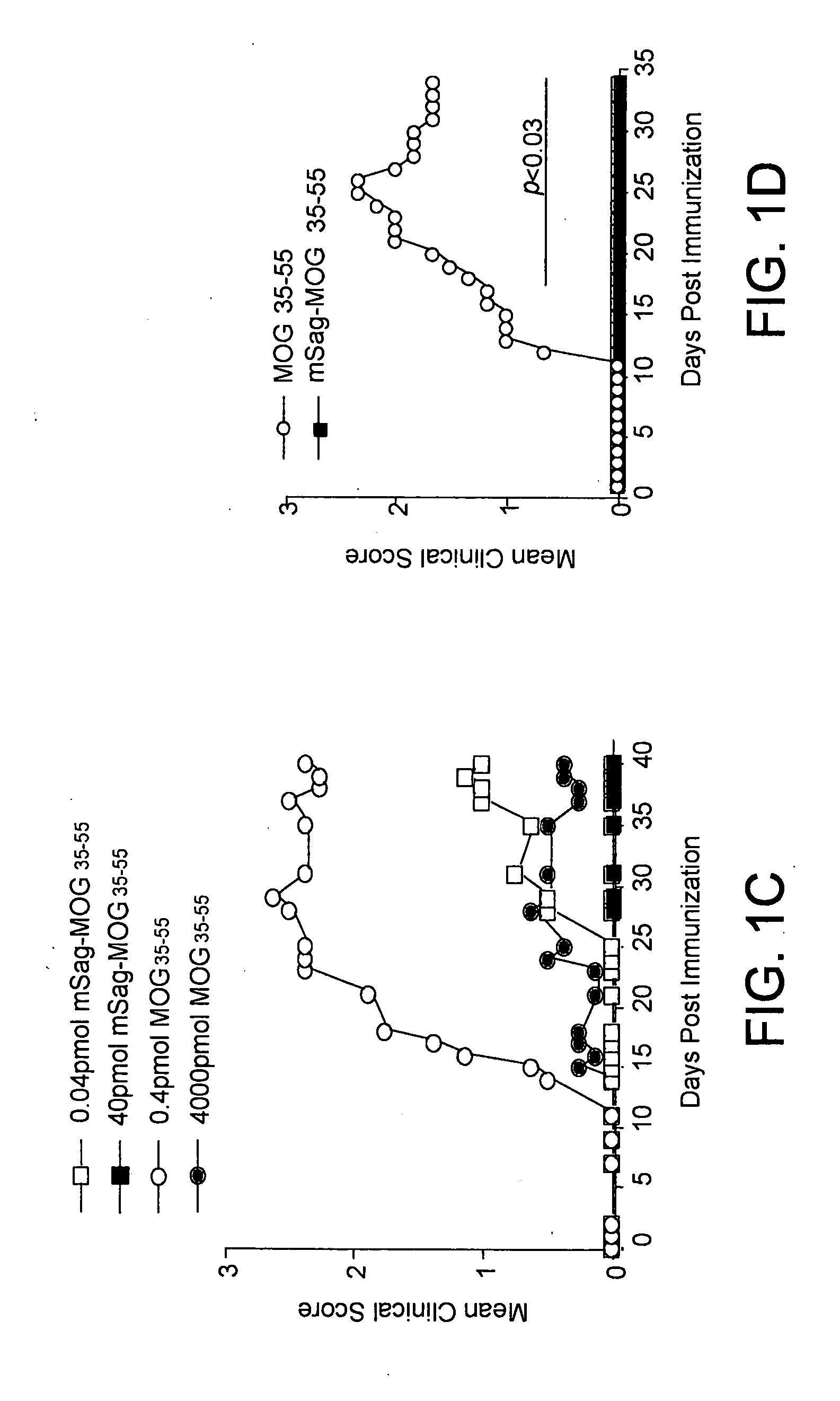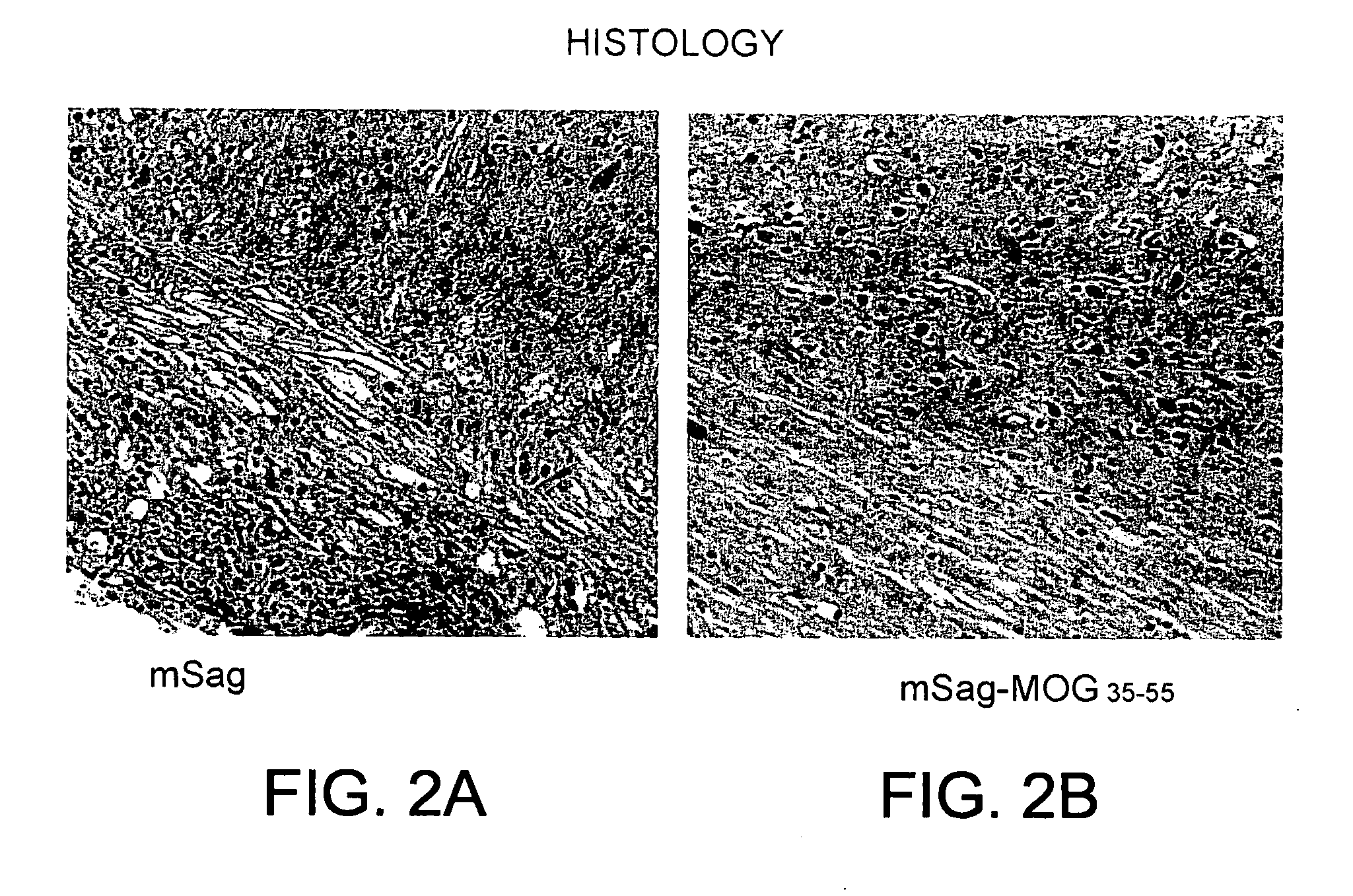Superantigen conjugate
a technology of superantigens and conjugates, applied in the field of multiple sclerosis agents and methods, can solve the problems of large doses and/or prolonged delivery of peptides for efficient suppression, residual disease worsening, and less complete recovery
- Summary
- Abstract
- Description
- Claims
- Application Information
AI Technical Summary
Benefits of technology
Problems solved by technology
Method used
Image
Examples
example
mSag-MOG35-55
Materials and Methods
Mice
[0140] C57BL / 6J mice were originally purchased from the Jackson Laboratory (Bar Harbour, Me.). The 2D2 transgenic mice express a TCR specific for fragment 35-55 of the MOG protein presented by IAb. The generation of these mice has been described previously10. OTII mice with a transgenic TCR specific for fragment 323-339 of OVA presented by IAb and were originally obtained from Dr. William Heath (Walter and Eliza Hall Institute for Medical Research, Melbourne, Australia). B6.SJL-PtprcaPep3b / BoyJArc (Formerly B6.Ly5.1 or CD45.1) congenic mice were purchased and imported from the Animal Resources Centre (ARC) Australia.
[0141] All mice were maintained by the Biomedical Research Unit, Malaghan Institute of Medical Research, Wellington, New Zealand. Experimental protocols were approved by the Wellington School of Medicine Animal Ethics Committee and performed according to the guidelines of the University of Otago. In all EAE experiments, sex and...
PUM
| Property | Measurement | Unit |
|---|---|---|
| thick | aaaaa | aaaaa |
| frequency | aaaaa | aaaaa |
| reactivity | aaaaa | aaaaa |
Abstract
Description
Claims
Application Information
 Login to View More
Login to View More - R&D
- Intellectual Property
- Life Sciences
- Materials
- Tech Scout
- Unparalleled Data Quality
- Higher Quality Content
- 60% Fewer Hallucinations
Browse by: Latest US Patents, China's latest patents, Technical Efficacy Thesaurus, Application Domain, Technology Topic, Popular Technical Reports.
© 2025 PatSnap. All rights reserved.Legal|Privacy policy|Modern Slavery Act Transparency Statement|Sitemap|About US| Contact US: help@patsnap.com



